
43/
Time-Traveling Trips
Local destinations bring Washington’s storied past to life
46/ Lions to Lambs Outings 15 family excursions blooming with possibility



43/
Time-Traveling Trips
Local destinations bring Washington’s storied past to life
46/ Lions to Lambs Outings 15 family excursions blooming with possibility



Change maker
Upstander
Passionate volunteer



Insert a little something extra into your next family extravaganza
award-winning, family-friendly films from the bygone era worth watching
games help kids master math skills without complaint
Foster independence in your kids at home with seven oft overlooked — but oh, so simple — strategies
budding kid-gardeners with the seed-starting basics, just in time for spring






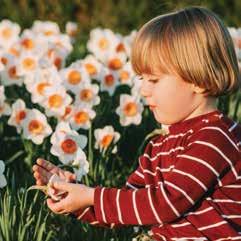
While summer is undoubtedly my favorite season in the Pacific Northwest, spring runs a close second. And if I’m being really honest, those first signs of the season — crocuses breaking through fresh earth, birds flocking to neighborhood feeders and the return of the long-forgotten sun — temporarily nudge summer’s pitch-perfect days out of my top spot, replaced by early spring’s pregnant moments, ripe with possibility.
However, it seems more than a bit disingenuous to be waxing poetic about possibility, when, for many families life has recently grown exponentially harder, and looming uncertainty obfuscates even the idea of a promising future. Many are just getting by or pushing aside that uneasy feeling that something isn’t right, and hasn’t been for a long time.
But — for the moment at least — I hope that our Spring Reset issue is a respite from the world’s uncertainty for all our readers; a sliver of peace in our busy (sometimes precarious) lives where parents can take a breath and reset, face forward and emerge like spring crocuses into the sunlight.
Savor life’s little moments with your kids by starting seeds as you wait for summer. Gemma Alexander walks through the essential steps so everyone can find success, regardless of the color of their thumb (p. 35). Gemma’s also handpicked more than 20 familyfriendly performances making their way to stages across Puget Sound this spring (p. 8), highlighting everything from groundbreaking art exhibits and highwire juggling acts to sweet productions designed with kids in mind. Our March Play List (p. 46), expertly curated by our intrepid calendar editor, Julie Dodobara, melds the “madness” of the season with spring’s annual favorites: flower festivals, Holi celebrations and leprechaun-inspired events.
Just in time for summer vacation, a local fourth-grade teacher helps writer Kinsey Gidick bring Washington state history to life through travel (p. 43). Consider her article your staycation planning guide. Plus, our Summer Camps and Activities Guide is tucked inside this issue to help round out your family’s summer structure.
And finally, it just wouldn’t be spring without some sort of cleanup inspiration. Your challenge: to organize the digital spaces that dominate modern parenting (p. 18). Tame and reclaim is the name of the game in this virtual sweep.
Here’s to a happy spring!
— Allison Sutcliffe, managing editor
MARCH 2025, VOL. 22, NO. 3 PUBLISHER
Alayne Sulkin What’s
EDITORIAL
MANAGING EDITOR
Allison Sutcliffe
ASSOCIATE EDITOR
Kari Hanson
FAMILY FUN EDITOR
Meredith Charaba
CALENDAR EDITOR
Julie Dodobara
COPY EDITOR
Sunny Parsons
CONTRIBUTORS
Gemma Alexander, Kinsey Gidick, Cherie Gough, Jessica Graham
DIGITAL MARKETING
MARKETING DIRECTOR
Lindsey Carter
EMAIL MARKETING SPECIALIST
Devon Hammer
SOCIAL MEDIA SPECIALIST
Brooke Collins
ADVERTISING SALES + PARTNERSHIPS
DIRECTOR OF COMMUNITY
PARTNERSHIPS + ADVERTISING SALES
Jessica Collet
SENIOR ADVERTISING AND PARTNERSHIPS MANAGER
Ida Wicklund
EVENTS + COMMUNITY
PARTNERSHIPS SPECIALIST
Brenna McCown
CLIENT SERVICES + DESIGN COORDINATOR
Angela Goodwin
ADVERTISING CLIENT SERVICES SPECIALIST
Mallory Dehbod
DIGITAL ADVERTISING + MARKETING SPECIALIST
Taryn Weiner
PRODUCTION COORDINATOR
Tamryn Nell
ART + PRODUCTION
SENIOR DESIGNER
Amy Chinn
ADMINISTRATION
BUSINESS MANAGER
Carolyn Brendel
OPERATIONS ASSISTANT
Erika Widjaja
PARENTMAP EDITORIAL ADVISORY BOARD
Benjamin Danielson, M.D. CLINICAL PROFESSOR, UW SCHOOL OF MEDICINE PRACTICING PHYSICIAN, UW MEDICINE
Joan Duffell
RETIRED EXECUTIVE DIRECTOR, COMMITTEE FOR CHILDREN
John Gottman, Ph.D. THE GOTTMAN INSTITUTE PROFESSOR EMERITUS, UNIVERSITY OF WASHINGTON
Laura Kastner, Ph.D. PSYCHIATRY + BEHAVIORAL SCIENCES, UNIVERSITY OF WASHINGTON
Bea Kelleigh
VICE PRESIDENT, DOVETAILING, LLC
Yaffa Maritz, M.A. FOUNDER, LISTENING MOTHERS + COMMUNITY OF MINDFUL PARENTING
Daniel J. Siegel, M.D. EXECUTIVE DIRECTOR, MINDSIGHT INSTITUTE
“Welcome to the Jungle” by Guns N’ Roses
“Tubthumping” by Chumbawamba
“Kickstart My Heart” by Mötley Crüe
“Break My Stride” by Matthew Wilder
CONTACT
“Won’t Get Fooled Again” by The Who
INFORMATION
Advertising information 206-709-9026 or advertising@parentmap.com Fax 206-709-9031
Calendar submissions calendar@parentmap.com
Editorial submissions editor@parentmap.com
Distribution distribution@parentmap.com
Administration 206-709-9026, parentmap.com
Subscriptions subscriptions@parentmap.com
Subscription rate 1 year: $12













power veggie that can’t be beetl
Late March in the Pacific Northwest is the perfect time to get your beetroot seeds in the ground. Beets are not only the jewel-toned showstopper of your garden, they’re also high in antioxidants and iron. Pro tips: The smaller the beet, the sweeter the root, and beets of any size make a delicious secret ingredient in chocolate cake.

Kids show up for sequels
According to Statista, “Inside Out 2” didn’t just tug at heartstrings — it packed theaters, selling over 60 million tickets across the U.S. and Canada last year, making it 2024’s most-watched PG-rated film. Coming in at number two was “Wicked,” followed by “Moana 2,” “Despicable Me 4,” and holding up fifth place in the battle for top features that suggest some parental guidance was “Kung Fu Panda 4.”
A magically delicious myth
With Saint Patrick’s Day just around the corner, it’s the perfect time to ask life’s big question: Do leprechauns exist? According to a survey by Cooley Distillery, 33 percent of Irish people in Ireland say yes, and 55 percent think those little green guys may have once roamed Ireland even if they’re not around now, possibly fleeing due to a lack of gold. Inflation hits everyone.

news for traumatized mice
Scientists in China have discovered that B vitamins (B6, B12 and folate) might help reduce PTSD symptoms by supporting brain energy and reducing stress-related changes in the brain. In a study on rats, these vitamins lowered stress levels and improved mood. Researchers are now looking into the effects the supplements may have on humans seeking mental health support.

Where are all the Californians going?
By Kristin Leong, M.Ed.

Kids don’t appreciate micromanagers either
Parents, take note: Micromanaging isn’t just a workplace issue — it’s a parenting pitfall, too. According to Harvard Business Review, command-and-control leadership styles (barking orders, hovering, dolling out discipline) stems from anxiety and insecurity. Research shows that employees — and children — thrive when consistently offered opportunities for empowerment, encouragement and coaching.
Washington’s moving trends are shifting gears. According to analysis of data from the Washington Department of Licensing by The Seattle Times, fewer people from other states moved here in 2024 compared to pre-pandemic 2019. Our California transplants alone are down 20 percent. International newcomers are way up though — new licenses for residents from other countries jumped 126 percent last year.




















By Gemma Alexander
Springtime in Seattle is as full of rainy days as it is sunny ones. So enjoy those sunny days outside when you can, but don’t miss out on these great family-friendly arts experiences. Whatever your family’s taste, this spring, you are sure to find a new show or exhibit that you won’t want to miss.
March shows and events
“Ai, Rebel: The Art and Activism of Ai Weiwei”
For the first time in its history, Seattle Art Museum is simultaneously presenting the work of one artist at all three of its locations. In the largest U.S. exhibition of
Ai Weiwei’s work to date, the downtown location will host a major 40-year retrospective. Seattle Asian Art Museum will display “Ai Weiwei: Water Lilies,” a Lego reinterpretation of Claude Monet’s famed series of paintings; and Olympic Sculpture Park will present 12 monumental bronze sculptures titled “Circle of Animals/Zodiac Heads.” Kids will love Ai’s rebellious spirit, but parental opinions of age appropriateness will vary.
Opening March 12 with timed entry downtown; March 19 in Volunteer Park; and May 17 at Olympic Sculpture Park. Free with museum admission. Seattle.
“Big Fish”
Parents might be familiar with the 2003 Tim Burton movie starring Billy Crudup as protagonist William Bloom, who tries to figure out whether there is any truth in his father’s tall tales, and in the process, comes to understand his father better. This elaborate work of musical theater will feature a huge ensemble. March 14–23. Price TBA. Venue, Kirkland.
“Clue: The Musical”
It’s kind of weird that a board game about murder would become a cult movie with intergenerational appeal, but kids seem to


love “Clue.” This season, Edmonds Driftwood Players are presenting an interactive musical version in which audience members not only help solve the crime, they determine the outcome (one of 216

possible solutions) by choosing from cards representing the potential murderers, weapons, and rooms. Recommended for ages 14+.
March 14–April 6. $25–$28. Wade James Theatre, Edmonds.
“Wild Fire and the Bird Scouts”
In a story about ingenuity and resilience in the face of seemingly insurmountable obstacles, in this case environmental damage, the fledglings of Bird Scout Troop No. 7 get separated from their flock on their first migration and must find their way back from a burned forest. For ages 5+.
March 14–30. $20. Olympia Family Theater, Olympia.
Moisture Festival
Moisture Festival is a variety show featuring aerialists, jugglers, magicians, comedians, dancers, bubble acts, clowns, acrobats, musicians, the weird and the wonderful — all keeping the vaudeville tradition alive. Matinees are specifically family-focused fun, but save the “Frisky Friday” evening shows for date night.
March 20–April 13. $10–$60. Broadway Performance Hall, Seattle.
Bruce Wells’ “Beauty and the Beast”
Introduce the family to classical ballet at this all ages, hour-long, narrated production of the fairy tale. Performances feature students from the Pacific Northwest Ballet
continued from page 8
School (some of whom you may see on the main stage next year).
March 22, 29 and 30. $15–$69. McCaw Hall, Seattle.
“Snow White and the Seven Dwarfs”
Taking place on the other side of the lake, this premiere from International Ballet Theatre for Children is specially designed to make classical ballet accessible to kids. Talented and experienced student dancers from the International Ballet Academy are featured in this choreographed adaptation of the classic fairy tale.
March 22–23. $34–$49. Meydenbauer Center, Bellevue.
“The Little Prince”
Bellevue Youth Theatre presents Antoine de Saint-Exupéry’s beloved classic about a pilot whose plane crashes in the desert, where he meets a strange little prince. Together, they talk and draw pictures in a shared exploration of the beauty of life. March 28–April 6. $13. Bellevue Youth Theatre, Bellevue.
April shows and events
“Dolly”
Everybody loves Dolly Parton. This year, Seattle Men’s Chorus celebrates the country music icon and actress with a full concert of Dolly’s greatest singles and soundtrack hits. Big hair and rhinestones are encouraged.

April 6–May 18. Prices vary by location. Multiple venues; Seattle, Bellingham, Tacoma, Everett.
“Athena”
Mary and Athena move from being competitors to confidantes in this comingof-age story about two young fencers navigating adolescence. The production is presented in collaboration with Salle Auriol,
GLSA is a socially emotionally focused program for K-5 children. Join us for a full day theme-based summer camp!

6415 1st Ave. NE (206) 525-5909

so expect some impressive fight choreography. Recommended for teens. April 10–May 4. $46. ArtsWest, Seattle.
“Notes of Spring”
Presented by the Bainbridge Symphony Orchestra, this all-ages Family & Community Concert will showcase the world premiere of Jessi Harvey’s new work, “Notes of Spring,” a concerto featuring the winner





















continued from page 10 of the 2024 Young Artists Competition; and Poulenc’s “L’histoire de Babar, le petit éléphant,” narrated by BPA Youth Theatre School students.
April 11–13. $35. Bainbridge Performing Arts, Bainbridge Island.
“Life of Pi”
This award-winning touring Broadway production is based on the bestselling book about a teenager who survives a shipwreck, only to find himself sharing a lifeboat with the remnants of his father’s zoo. Although the play uses amazing animal puppets, the story may be too intense for younger children.
April 15–20. Starting at $35. Paramount Theatre, Seattle.
The Genius of John Williams For one night only, Tacoma Concert Band presents film score music by the cinematic genius John Williams — composer for “Star Wars,” “Indiana Jones,” “Jurassic Park” and more. This concert will deliver live performances of unforgettable movie themes that have defined our lives for generations.
April 19. Adults $20 and up; children younger than 18 are free when you call or visit the box office in person. Pantages Theater, Tacoma.
“Squeeze”
Inspired by the antics of Buster Keaton and Samuel Beckett’s absurdism, and with a cast composed of five clowns and two acrobats, this show promises to be high energy and visually appealing, while the heavier thematic elements exploring life and the issues of today’s world keep it grounded. Recommended for teens and mature tweens.
May shows and events
“The Pa‘akai We Bring”
Seattle Children’s Theatre hosts a one-ofa-kind production from Honolulu Theatre for Youth that’s steeped in history, culture and healing. “The Pa‘akai We Bring” tells a multigenerational story that mixes ancient legends, hula, live music, original songs and audience participation into a tasty potluck of performance, joyously served up with aloha.
May 7–June 1. $30. Seattle Children’s Theatre, Seattle.
the cherished songs.
May 9–10. $8–$22. Vashon Center for the Arts, Vashon Island.
Kaleidoscope Spring Concert
An evening of contemporary dance is an intimidating prospect for a lot of people, but when the dancers are ages 7–17 and the dances are created by professional choreographers, it instantly becomes accessible. Adults will be impressed by the young dancers’ skill, while kids might be inspired to try dancing themselves.
May 9–11. $TBA. Broadway Performance Hall, Seattle.
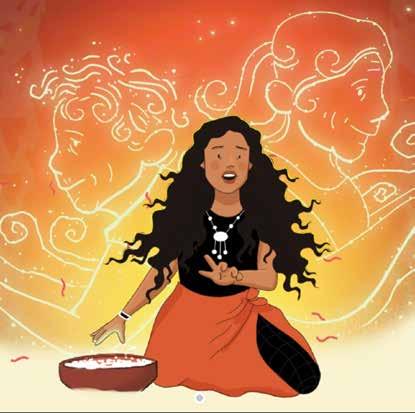
“The Pa‘akai We Bring” Image courtesy of sct.org
“The Sound of Music” Youth Edition
April 4–13. Ticket cost on a sliding scale. Seattle Public Theater, Seattle.
In one of the most beloved musicals of all time, an exuberant young governess brings music and joy back to a broken family, only to face danger and intrigue as the Nazis take power in Austria. This adaptation has been edited to better suit younger attention spans but preserves
Equal parts mischief and magic, “Coppélia” is a family-friendly ballet in which sweethearts Franz and Swanhilda sneak into the workshop of Dr. Coppélius to investigate his mysterious life-like doll. High jinks ensue. Presented by Olympic Ballet Theatre.
May 10–11. $29–$52. Edmonds Center for the Arts, Edmonds.
“Alice by Heart”
This young adult version of “Alice in Wonderland” is set in wartime London. Can the nonsense world of Wonderland help Alice keep the outside world at bay?
May 15–18. $8–$15. Black Box Theatre at Edmonds College, Edmonds.
“The 25th Annual Putnam County Spelling Bee”
This musical comedy explores the lives of six tweens fighting for victory in the biggest battle of their young lives — the county spelling bee. Recommended for all ages.
May 16–June 8. $25. Olympia Family Theater, Olympia.
June shows and events
“Earth to Kenzie”
This one-act opera created specifically

for kids explores themes of empathy and finding strength despite adversity. It tells the story of Kenzie, a fifth-grader who escapes into video games when her family loses their home. The fully staged and costumed opera, performed by professional singers and with live piano accompaniment, lasts only one hour, including the post-show Q&A.
June 7, three performances. $10–$25. Tagney Jones Hall at the Opera Center, Seattle.
This energetic sci-fi musical with a pop-rock score explores the cost of popularity as awkward teen Jeremy Heere relies on a supercomputer to help him be more chill. Its themes of identity, friendship and the dangers of conformity make it a coming-of-age story you’ll never grow out of.
June 20–July 13. $30. SecondStory Repertory, Redmond.
TeenTix
Encourage your 13- to 19-year-olds to explore the arts on their own with a free membership to TeenTix. Members can purchase $5 day-of-show tickets at more than 100 partner organizations in the greater Puget Sound region, including museums, movie theaters, stage theaters, dance companies and symphonies. ■
Seattle-based freelance writer Gemma Alexander focuses on the intersection of parenting and the arts. When she’s not writing for ParentMap, she blogs at gemmadeealexander.com and tweets @gemmadeetweet.











Seattle Children’s is proud to be the presenting sponsor of the 2024–2025 ParentEd Talks series
Scan the QR code below to sign up for Seattle Children’s Healthy Tides newsletter. Each issue shares timely tips to keep your family as safe and healthy as they can be.
Hope. Care. Cure.™







Let’s face it — parenting is tough, especially without a manual to guide you through every twist and turn. That’s where ParentEd Talks come in. ParentMap is excited to offer a transformative series of parent education webinars, designed to provide the guidance you need to support your child’s development.

Harmony at Home: Successfully Navigating Parent-Child Differences
March 20
Esteemed parent coach Dr. Ann-Louise Lockhart shares practical strategies for building a strong parent-child connection.

From Chaos to Calm: Compassionate Discipline for Spirited Kids
April 1
Parenting coach and “Raising Lions” author Joe Newman offers valuable insights on turning defiant kids into motivated, respectful ones.

Let Go and Let Grow: Raising Confident, Independent Children
May 6
Author and Let Grow founder Lenore Skenazy shares her journey raising confident, independent kids and the movement to ease up on hyper-involved parenting.

Nurturing Resilience: Essential Coping Skills for Kids
June 5
Author and mental health professional Janine Halloran provides parenting strategies to help kids build resilience and thrive.







































By Jessica Graham
Children’s birthday parties have gotten so complicated. Busy family schedules often mean cramming multiple parties into a single weekend or cutting parties short due to time constraints. But amongst all the busyness, the bottom line is that everyone wants their child to feel celebrated and special. Here are a few easy ways to celebrate beyond the birthday party.
Celebrate ‘Birthday Eve’: Think Christmas Eve but for birthdays. Tell them about the night before you met them: Where you were, what you were doing, how you were feeling. Look through old pictures, play family home movies and best of all, sing “Happy Almost Birthday.”
Start a new tradition: If you don’t have a special tradition, it’s not too late to start one. Years ago my parents started the birthday chair, a tradition where the birthday child wakes up to find their place at the breakfast table decorated with streamers, balloons and other goodies. My children love the birthday chair — it’s a birthday must, even when we’re traveling.
Plan a trip: At first blush, a birthday trip sounds hard (and costly) to implement. But there are plenty of ways to gift a trip. You can take the whole family to a special destination, you can do a birthday getaway with parents or make it a solo parent trip, for some quality one-on-one time. Finally, you can ask the grandparents to play tour guide.
Give goody bags to the parents: Even if you decide to go the traditional birthday party route, you can still shake things up a bit. I attended a recent birthday kid party where there were goody bags – for the moms. It was brilliant.
Happy celebrating! ■


Our camps offer active play, along with creative thinking to build healthy bodies and minds!
All our camps are geared for ages 4 - 10, at both Kirkland and Lynnwood Pirates, Farms, Superheros and many other themes! 9:30 am - 2:30 pm, Monday through Thursday Call store for pricing (weekly and daily) and theme details.
Includes Lunch, Snack, and Drinks
Kirkland | (425) 820-2297 | https://www.pumpitupparty.com/kirkland-wa/ Lynnwood | (425) 774-2297 | https://www.pumpitupparty.com/Lynnwood-wa/
RESERVE ONLINE OR BY PHONE TODAY!
RESERVE ONLINE OR BY PHONE TODAY!


























By Cherie Gough
Thousands of photos. Currently, 1,128 unread emails. Not enough storage.
If any of the above is familiar, you know that technology comes with clutter all its own. The mental load added by devices can be overwhelming. This year, make a commitment to declutter your devices, because just like clearing clutter from our homes, clearing clutter from our digital lives helps make room for greater calm and happiness. I spoke with professional organizer Bethel Swift-Muñoz, founder of Real Life Professional Organizing, for practical tips that make the process attainable.
Don’t aim for perfection
Getting a job done is more important than getting a job done perfectly. “As with any organizing project, think about good, better and best scenarios,” says Swift-Muñoz. “Before you jump in, envision an [attainable] end goal to motivate you toward completion.” Life often gets in the way, so don’t beat yourself up if you “only” do a good job the first time around.
Not enough storage
Start small: the computer desktop
Swift recommends having from one to five (maximum 10) main folders on your desktop. Overorganizing can be counterproductive. Ideally, structure folders to be no more than three clicks away from any

continued from page 19
file. It’s important to name folders and files the way you will look for them. Ask yourself, “When I look for a digital copy of my car registration, will I naturally type ‘truck,’ ‘vehicle’ or ‘F-150’ into the search bar?”
Be purposeful with email
Fewer email addresses are easier to manage, of course, but Swift-Muñoz recommends having separate work and personal email addresses to prevent getting sucked into work when you embark on personal tasks (or vice versa). Use yet another email address for signing petitions or making purchases, since these generate follow-up spam. If using email folders, Swift-Muñoz proposes keeping the system simple for easy access and maintenance. She uses an “Active” and “Archive” structure with a few subfolders.
The Unroll.Me app helps people unsubscribe from unwanted emails en masse and will condense others into “digests” to view at the user’s convenience. Learn more at unroll.me



Tackle the mother lode — photos
Swift-Muñoz’s number-one suggestion for an overwhelming number of photos on phones is to delete, delete, delete! “As with physical items, the fewer we have, the easier it is to organize. By regularly deleting duplicates, old screenshots and blurry snaps, you’ll have an easier time finding the photos you really want.”










How to get started
Go through photos starting with the oldest and work on them for 10‒20 minutes each day. Or, begin with the most recent photos and work your way backward. Seize free moments to delete photos: in the drive-through line; while you wait for kids at school or after-school activities; during a child’s naptime; or when you have travel downtime. Again, a few minutes each day makes a difference!
Once you’ve deleted photos, set up a simple file system and add new photos to it as you go. Use the Mylio app to organize photos, videos, report cards and other meaningful digital files in one lasting library that’s accessible on all your devices. Fit even the largest photo library on your phone without reaching storage limits and set automated backups. Easily import years of Instagram, Flickr and Facebook images. Visit mylio. com to learn more.
Create a backup system
Few things are more upsetting than losing precious photos of our children. To avoid this, Swift-Muñoz recommends regularly backing up photos to three locations: cloud-based storage, your computer desktop and an external hard drive. “I prefer to do most sorting and renaming of photos on my laptop and then upload them to my secondary backup systems,” says Swift-Muñoz. When naming folders, she puts the date first so photos are automatically sorted in chronological order. “The most important thing to remember when naming folders and photo files is to go broader initially,” she says. “You can always get more specific later.” It can be very difficult to maintain files the other way around. If you have photos and videos stored only in apps like Instagram and Facebook, be sure to back up any of those you want to keep as well.
Share the love
Consider preserving special photos by creating an annual photo book for yourself or to give to loved ones as gifts. Or create shareable digital folders.


When it comes to photos, get the kids involved. Most kids enjoy choosing favorite photos — let them help decide which ones to keep. To find a professional organizer, search by city on the National Association of Professional Organizers” website, NAPO.net. Swift-Muñoz is adding photo organizing to her repertoire of services , we will
FACILITATOR, WE WILL CO-CREATE AND EXPLORE YOUR CONNECTION TO: - MINDFUL PRACTICE AND SELF-REGULATION- SELF-COMPASSION- ATTACHMENTS AND ATTUNEMENT WITH YOUR CHILD(REN)- INNER WISDOMNot all of us can do great things. But we can do small things with great love and compassion . . . starting with ourselves . . . Inspired by Mother Teresa communityofmindfulparenting.com



continued from page 21
starting this year. Learn more at reallifeprofessionalorganizing.com.
Stay motivated
The best way to stay motivated is to not let digital clutter get out of hand again. Schedule maintenance on your calendar, such as “delete emails,” as a weekly or monthly to-do item. Try pairing these tasks with another activity you do regularly (housecleaning, laundry, doctor visits, etc.).
Officially sign off
If you work from home, avoid the blurred boundaries and mental clutter of always being connected and available. To officially sign off for the day, consider a ritual that creates boundaries between home life and work life. “Try an initiation and cessation routine, such as a
quick gratitude practice or affirmation to transition in and out of work and family modes,” suggests Swift-Muñoz.
Gretchen Rubin, author of “Outer Order, Inner Calm: Declutter & Organize to Make More Room for Happiness,” suggests that adding an element of fun motivates people to complete a task. To that end, she created a Desk-Cleaning Bingo game; each square contains a small, manageable task. Play every day or once a week for a satisfying sign-off. Visit her Instagram page, @gretchenrubin, or her website, gretchenrubin.com, for details.
Most importantly, remember that any day is a good day to start decluttering! ■
Cherie Gough is a writer who shares simple solutions for families facing celiac disease and food allergies. Find her on IG @cgoughwrites.











































FEB 12 -

















TICKETS























By Gemma Alexander
Every year, the Academy of Motion Picture Arts and Sciences bestows Oscar awards for two dozen different categories, but viewers are most interested in the award for best picture. Family-friendly movies like “Wicked” are often nominated but rarely win. But in the past 96 years, the Oscar has gone to a few gems that families can still enjoy watching together. If you can’t find them streaming, Scarecrow Video has them all (and the devices to play them on).



continued from page 27
“It Happened One Night,” 1934
Claudette Colbert and Clark Gable are the wisecracking stars in this whip-smart comedy about a cynical reporter who hits the road with a runaway heiress. Younger kids may not be able to keep up with the snappy banter, but older kids will love it. It was the first film to win all five major categories: best picture, best director, best actor, best actress and best screenplay.
“Rebecca,” 1940
While “North by Northwest” is probably the best movie for introducing kids to the thrill of Alfred Hitchcock’s suspense movies, “Rebecca” is the one with an Academy Award. Starring Laurence Olivier and Joan Fontaine, this adaptation of Daphne du Maurier’s Gothic romance isn’t appropriate for the youngest viewers, but tweens and teens will appreciate how much tension

and melodrama Hitchcock created in an era when on-screen sex and violence were banned. Nominations: 11. Wins: 2.
“Casablanca,” 1943
Even if you don’t pause repeatedly to explain geopolitics in the years before the U.S. joined World War II, kids can enjoy one of the greatest movies of all time, with Bogart and Bacall’s magical chemistry, Peter Lorre’s role as a shifty black marketeer, and the hopeful refugees as they practice English (“What watch?”). Older kids can also explore the acres of moral gray area occupied by nearly every character in the movie. Nominations: 8. Wins: 3.
“All About Eve,” 1950
Move over, “Mean Girls.” High school cliques can’t hold a candle to the social power struggle between Bette Davis’ hysterical diva and Anne Baxter’s sweetly conniving


ingenue, but kids might be closer than adults to the heart of this story, which challenges viewers to decide who’s really the bully and who is hiding behind a mask. Nominations: 14. Wins: 6.
“West Side Story,” 1961
Looking for a movie that can introduce your first-grader to Shakespeare, Stephen Sondheim and choreographer Jerome Robbins, as well as the incredible Natalie Wood and oft-overlooked Rita Moreno, in one tidy cinematic package? “West Side Story” can do all that, and it’s got earworms to last a lifetime. Just be prepared to talk about the unfortunate stereotyping that comes with fake accents and racial miscasting. Nominations: 11. Wins: 10.
“My Fair Lady,” 1964
It’s kind of a mystery why this bloated all-ages movie with its forgettable songs

swept the Oscars in 1964. But the costumes are incredible, and every child deserves to know Audrey Hepburn, who is as charming and delightful here as anywhere. But feel free to watch “Roman Holiday” instead — it didn’t win an Oscar, but it’s a better movie. Nominations: 12. Wins: 8, including costume design.
“The Sound of Music,” 1965
One of the last great Technicolor musicals, this all-ages Rodgers and Hammerstein story about a winsome nanny who heals a grieving family makes it easy to forget that the real action of the plot involves fleeing the Nazis. But 80 years after the liberation of Auschwitz, it’s still important to remember the dangers of authoritarian regimes, and there’s no gentler way to introduce children to a painful moment of history than with “The Sound of Music.” Nominations: 10. Wins: 5.

continued from page 29 “Oliver!,” 1968
The only G-rated movie to ever win best picture, “Oliver!” is the musical adaptation of Charles Dickens’ novel “Oliver Twist.” Even if you don’t think you’ve seen it before, the phrase “Please, sir, can I have some more?” probably rings a bell, and your kids will be singing “Food, Glorious Food” for weeks. Nominations: 11. Wins: 5, plus an honorary award for choreography.
BONUS: “The Wizard of Oz,” 1939 It didn’t win best picture, but how could we ignore “The Wizard of Oz,” especially with “Wicked” nominated this year? If your kids are new to classic movies, you have to start with this all-ages classic. Nominations: 6, including best picture. Wins: 2, including best original song (“Over the Rainbow”) and best original score. ■
Seattle-based freelance writer Gemma Alexander focuses on the intersection of parenting and the arts. When she’s not writing for ParentMap, she blogs at gemmadeealexander.com.


Note: For old movies, you can’t rely on ratings; the modern system has evolved since it was established in 1968. From the ’30s through the ’60s, films were self-censored according to the Hays Code, which banned sexual imagery and swear words, but permitted racial stereotypes and other contemporary taboos.







































Utter the phrase “math homework” to any kid and I’m guessing they’ll suddenly remember that dishwasher that needed unloading. Rather than chasing them down, waving the latest worksheet frantically overhead, hand them a deck of cards and get playing. Card games are a fantastic — not to mention super sneaky — tool that lets kids practice their math and problem-solving skills, without making it feel like work. Here are four engaging games that make learning math exciting.
A twist on the classic card game War, this version helps kids practice addition, subtraction or multiplication, depending on their skill level. Each player flips two cards and either adds, subtracts or multiplies them together. The player with the highest total wins the round.
Even toddlers who are just learning their numbers can sharpen their skills with cards. To play, remove aces and face cards, and divide the deck between players. Turn one card over and place it in the center, faceup. Then flip cards over to compare values with the center card — is it higher or lower?
Make 10

In this simple yet strategic game, kids aim to create sums of 10 using the cards in their hand. Lay out several cards, and players take turns picking pairs that add up to 10. This game strengthens number sense and quick mental math skills,

making it perfect for younger learners.
Place Value Pyramid
Players take turns drawing cards and arranging them in a pyramid to create the highest possible number. For example, if a child draws a 4, 7, and 2, they can form 742 or 472. Try these games at home, and watch your child’s confidence in math grow. ■































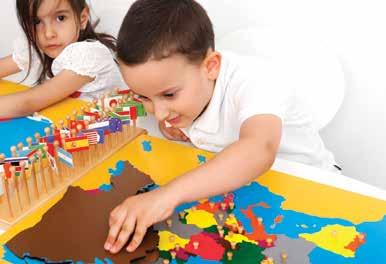

























































‘Tis the sesason to grow a green thumb
By Gemma Alexander
During this time of year, playing outside is not particularly appealing on most days. But kids can still connect with nature and get excited for the warmer days of spring by starting seeds indoors. Planting seeds is a fun way for kids to learn about biology, become invested in the natural world, develop patience, and even become more adventurous eaters. (Studies confirm that kids are more likely to eat food they helped grow.)
To everything a season
Many popular vegetables need soil temperatures of 60 F or higher to germinate. In our area, that usually occurs in late May, which may not leave enough time to grow and produce fruit before the weather turns cold again in fall. So, we give seeds a head start indoors and plant the seedlings outside once it’s warm enough.
The best time to start your seeds



Find your adventure today! Our online calendar is your go-to guide for family activities around Puget Sound.
MMSiscommittedtoa high-qualityMontessori educationwithaffordable tuition,reachingan economically,racially,and culturallydiverse community.MMSengages inawholechild,place basedapproachtoour curriculum.Serving children15months to12years.
MMS is committed to a high-quality Montessori education with affordable tuition, reaching an economically, racially, and culturally diverse community MMS engages in a whole child, place based approach to our curriculum. Serving children 15 months to 12 years.
Ferndale,Washington meadowsmontessori.org @mms_wa 360.778.3681






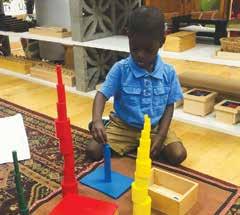


Celebrating 21 years serving the Bonney Lake Community! “Clean, comfortable classrooms and dedicated teachers await your child.” Call to tour today! 253-862-8599

continued from page 35 depends on your planting zone and on the amount of time it takes for that type of plant to reach maturity. You can find your USDA Plant Hardiness Zone online and use that to determine planting dates based on the instructions on each seed packet. This could be a good job for your older kids, but if you want to keep things simple, the “Maritime Northwest Garden Guide” from Tilth Alliance is the classic gardening calendar for local green thumbs. You can also enter your ZIP code online at Almanac to find localized planting dates for many vegetables, fruits and herbs.
started
Creating a seed-starting setup can easily run into hundreds of dollars if you’re not careful. But unless you’re trying to become self-sufficient, you don’t really need most of the fancy gear you’ll find marketed as necessities. Special seed trays or biodegradable pots are nice, but old milk cartons are equally effective. A few

wood craft sticks are handy to label your seeds, but it can be fun to be surprised and practice plant identification, too.
All you really need are seeds, soil and sunlight — all of which can be manipulated to improve your chances of success.
Seeds
Poring over seed catalogs on a rainy Saturday is surprisingly entertaining, and it’s the best way to source interesting plants (an all-purple vegetable garden, maybe?) that are appropriate for the local climate. But if you want to get started right away, browsing seed racks at your local nursery is fun, too. Big hardware stores might be cheaper, but they tend to have fewer varieties as well as stock selections that are not tailored to our region. It’s better to pay a little more for seeds that you can count on.







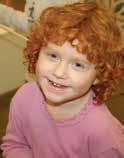

— Maria Montessori









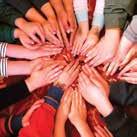


continued from page 37
You want your kids to have fun, so it’s best to choose sturdy plants that germinate quickly. Alfalfa sprouts, radishes and lettuce are more likely to be successful than finicky plants like cauliflower, artichokes or onions. Similarly, flowers like sweet pea, cosmos or love-in-a-mist are better choices than lavender, which can take months to germinate. But beware of invasives. Your kids might enjoy easy success from starting mint, lemon balm or purple loosestrife, but if you plant these things outside, they will take over your garden and may even invade natural areas.




It’s tempting and — despite internet warnings to the contrary — possible to use dirt from the backyard, but you’ll have better success with a commercial seed-starting mix or even regular potting soil. These products are lighter in texture and better than natural garden soil at holding water without becoming waterlogged, making it easier for delicate seedlings to survive.







The Puget Sound region’s short, cloudy winter days may not be bright enough for many seedlings to thrive, even in a “sunny” window. That doesn’t mean you have to build a grow closet to start seeds (unless you want to; that could be another fun project). But purchasing a couple of inexpensive grow lights to place over your plants will be helpful. Since seedlings need warm soil to grow and windowsills tend to be colder than the interior of the room, a heating mat will improve germination and growth. But placing seedlings near a heat vent or even moving them away from the window at night can make a difference, too.
The hardest part
Even the fastest germination rates can seem like a long time to excited kids, and waiting without action
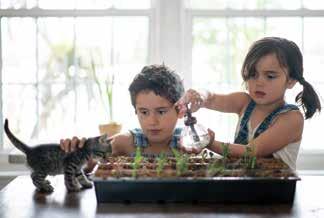
can be frustrating. Encourage kids to develop a schedule for seedling maintenance tasks, and keep them engaged with watering, misting and turning grow lights and heating mats on and off every day. Kids of all ages can design the garden where they will eventually plant their seedlings outdoors. The youngest can draw pictures, while older kids can practice measuring outdoor spaces and using graph paper to make planting plans based on plants’ eventual sizes. If your kids are really enthusiastic, they can start learning how to collect new seeds from your plants once those are mature or try new recipes that use the plants you are growing.
Indoor gardener
If you don’t have a yard in which to transplant your seedlings, don’t despair. Many flowers and vegetables can grow successfully in a window box, in pots on a balcony or porch, or even indoors. The picture book “Linnea’s Windowsill Garden” is full of fun indoor gardening projects, such as starting plants from the seeds in grocery store oranges, melons, tomatoes, grapes and avocados. You can grow green onions from the root ends and grow garlic greens from old garlic cloves, or try an indoor herb garden.
Many houseplants can also be grown from cuttings. Succulents, like jade plants or hens and chicks, are the easiest to root, but beware of enthusiastic overwatering. Cuttings from philodendrons, begonias, coleus and polka dot plants are good candidates for rooting in a glass of water.
Whatever your housing situation, there is some kind of plant that you and your kids can enjoy propagating while you wait for the warmer, drier days of summer. ■
Seattle-based freelance writer Gemma Alexander focuses on the intersection of parenting and the arts.






•
•
• School Year September to June
• Summer Session July to August
•
•
Stay







I’m often reminded of the old Nike slogan, “Just do it,” when I’m trying to get my kids to do things. And in a world where parents often carry the heavy load of “doing,” I’m always looking for ways to ensure my kids can, in fact, just do it (whatever simple task that may be) themselves. Montessori education emphasizes independence and hands-on learning. But you don’t need a Montessori classroom to bring these principles into your home. Here are some practical ways to encourage independence in your child’s daily routine.
Create a child-friendly environment. Set up spaces where kids can access what they need without adult help and think about making your home accessible to your child. Low shelves, child-sized furniture and reachable storage spaces allow children to access materials, clean up after themselves and take responsibility for their belongings. For example, in the kitchen, place child-safe dishes and utensils in a lower cabinet. In kids bedrooms, use a low-hanging rack so they can choose their own clothes. Label bins and organizing items logically help children learn where things belong. For routines and checklists, use images that illustrate actions rather than words so kids can tackle tasks on their own.





Encourage practical life skills. Children love to pitch in whenever and wherever they can. The key is giving them the opportunity to do so. Provide opportunities for children to dress themselves, brush their teeth and prepare simple meals. Let them help with simple household tasks like pouring water, slicing soft fruits with a child-safe knife or cleaning windows. Place a mirror at their height, offer clothing with easy fastenings, and set up a low snack station with healthy options they can serve themselves. These small tasks build confidence and practical life skills. These activities build confidence and coordination.
Slow down and let them try. Resist the urge to do simple things for your child when they
struggle. Whether it’s putting on shoes or zipping a jacket, allow extra time for them to practice and succeed on their own. Not only will they feel proud, but you’ll reap benefits too.

Promote problem-solving. Another plea to let nature take its course: Encourage kids to find solutions to life’s little problems on their own. If they spill water, show them where to find a towel. If they struggle with a puzzle, ask guiding questions instead of giving the answer. This approach fosters resilience and perseverance.
Give an “A” for effort and encourage responsibility. When your kids try new things or are working on new skills, remember to praise their effort rather than the results. Also keep it specific. Rather than saying “good job,” direct your praise with specifics: “You worked hard to fold those clothes neatly.” This helps foster a growth mindset and motivates kids to continue learning.
Give choices whenever possible. Offer your child choices to foster decision-making skills. For example, “Would you like to wear the blue shirt or the red one?” or “Do you want to read before or after snack time?”
Model independence. Finally, remember that much of what children learn comes by observing the adults around them. So lead by example when it comes to managing tasks and time.
Small shifts in your daily routines and around the house can help your child develop independence, confidence and a love of learning — important skills that will last a lifetime. ■








































































































How to turn fourth-grade Washington state history lessons into a family trip
By Kinsey Gidick
Katrina Horbatko Durham never fails to capture her students’ attention when she reveals that their home state has five active volcanoes. “That always gets their attention,” the fourth-grade teacher at Ellensburg’s Ida Nason Aronica Elementary School says with a laugh.
To bring Washington’s geography to life, Durham turns to Google Earth, her favorite tool for helping students visualize where they live among the state’s diverse geographic areas. As she zooms out, the children see their Northwest home from space before she gradually brings them back down to Earth—highlighting the wheat-rich Palouse, the misty grandeur of the Cascades and the shimmering expanse of Puget Sound. It’s a breathtaking mosaic of natural wonders, one that some adults may take for granted but it never fails to amaze fourth-graders. After all, that’s the essence of the fourth-grade Washington state public school history curriculum — to help students understand their place in the rich history of the Pacific Northwest.
It’s an exciting journey for 9- and 10-yearolds as they dive into the region’s past,
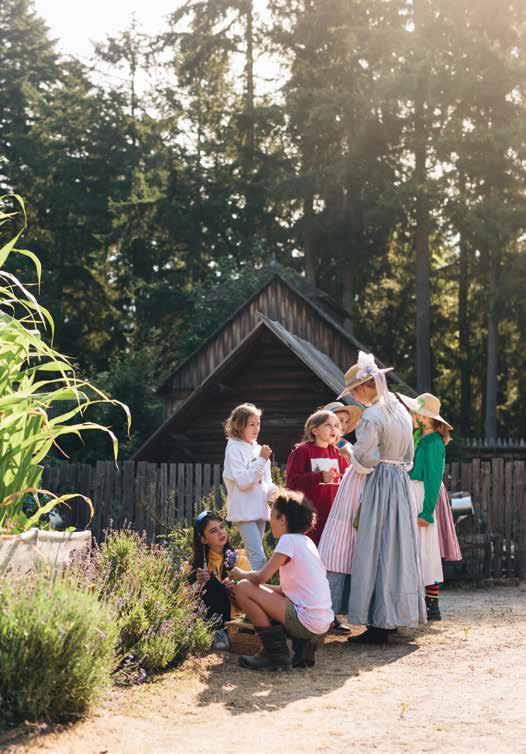


from page 43
learning about Indigenous cultures and tribal sovereignty, exploring the geography of the Oregon Territory, tracing westward expansion and learning about the Lewis & Clark Trail. But these complex topics can be confusing without tangible experiences to bring them to life. A family trip to key historic sites across Washington can make these lessons more engaging and memorable, turning abstract concepts into real-world adventures. Here’s how to take those lessons from the textbook into the real world.
A lesson in Native peoples Durham is adamant that you can’t teach children about Washington state history without first acknowledging the Indigenous people who lived on this land long before westward expansion. For her, that starts with acknowledging her school’s very namesake, Ida Nason Aronica, an instrumental member of the Kittitas band who helped preserve the culture and language of her tribe during her lifetime. With Aronica in mind, Durham stresses that students must respect where they’re standing every single day. Durham shares many legends and uses Indigenous stories to spark her student’s imaginations. But these tales need not stay in a textbook.
In central Washington’s agricultural heartland, the Yakama Nation Cultural Center, located in the mint-farming hub of
Toppenish, provides an immersive look into the lives of 13 allied bands through museum exhibits featuring dioramas, traditional beadwork, regalia and replica settlements. Salmon fishers before colonization, the tenacious Yakama confederation led by Chief Kamiakin met the country’s most famous explorers, Lewis and Clark, in 1805 when the Corps of Discovery arrived where the Columbia meets the Yakima River.
The Native experience in Washington is not homogeneous, however. To help children understand the diversity of Indigenous cultures, consider visiting the Duwamish Tribe Longhouse in Seattle. This full-size Puget Salish lodge, built with traditional cedar beams, serves as both a cultural hub and an educational resource, and beginning in February, will restart education programs with age-appropriate lessons about the tribe.
The mountains are calling “The biggest thing we address in fourth grade is geography,” says Durham. And one of the most awe-inspiring places to experience Washington’s dramatic topography is by taking a trip to Mount Rainier National Park. With the park’s five access points, everyone in the state can easily map out a visit to the most glaciated peak in the Lower 48. Even better? Mount Rainier is a great place to blend history with ecology lessons. Children can revisit the ancestral home of the Cowlitz, Muckleshoot,

Nisqually, Puyallup, Squaxin Island, Yakama and Coast Salish peoples while discovering the flora and fauna of the subalpine space that surrounds Paradise Lodge — a fascinating historic building in its own right. Spot marmots on the mountain, then wow kids by showing them the images of the nine-hole golf course that once stood near the lodge in the 1930s.
Discover what sparked expansion into the Oregon Territory
What motivated people to explore the West? According to state social studies standards, that’s a question even fourth-graders should be able to answer: natural resources. A little over a decade before the Oregon Territory was officially established in 1848, the region’s abundant natural wealth attracted fur traders. Seeking to capitalize on this lucrative industry, the Hudson’s Bay Company established Fort Nisqually in 1833, making it the first European settlement on Puget Sound and a key hub for the fur trade.
Children can learn about the 19th-century Pacific Northwest frontier by visiting Fort Nisqually Living History Museum. Although the museum is a hot spot for field trips, even those just visiting as a family can take part in interactive activities, such as carrying water on a yoke or learning to card wool or make candles. On April 26, from 11 a.m. to 4 p.m., admission to the site is free to all Pierce County residents and tribal members.
Dive into Columbia River history “In the Western Hemisphere, no river empties more water into the Pacific” than the Columbia River, writes Pulitzer Prize–winning journalist Timothy Egan in his award-winning book “The Good Rain: Across Time and Terrain in the Pacific Northwest.” That’s quite a stat to consider, especially for children still learning multiplication, but you can help them understand
the magnitude of their state’s influential waterway by taking a trip to see it.
In Stevenson, explore the Columbia Gorge Museum, which looks out onto the river, for a glimpse into the history of the Columbia through art and immersive displays. Then, return to the present with a visit to the Rocky Reach Discovery Center in Wenatchee. At the center, you can experience the Columbia through games, stories, history and art, as well as learn about the Rocky Reach Dam — one of 29 dams in the Columbia River Basin — and how the Columbia River has been transformed by dams to supply hydropower, for better or for worse.
Start at home
“One of the most overlooked resources is the history of our own communities,” Durham says. “Kids need to feel connected




to where they are right now.” If traveling isn’t an option or you’re looking for a way to spark the history conversation closer to home, tap into local resources, whether it’s a local museum, library archives or even a walk through town examining old buildings. These simple activities can bring the past to life, helping kids make personal connections to hard-to-grasp eras — just as the fourth-grade curriculum encourages them to explore how communities have changed over time and what has shaped them. ■
Kinsey Gidick is a freelance writer based in Virginia and is a Yakima native. She’s been published the New York Times, Washington Post, Travel + Leisure, Garden & Gun, Fodor’s, BBC, Smithsonian, National Parks Magazine and USA Today, among others. When not writing, she loves to travel with her husband and 9-year-old son.








Check out many more happenings online at parentmap.com/calendar
By Julie Dodobara

It may sound like madness, but March is here and spring is in sight. Make the most of more daylight (we’re so ready!) and outdoor time, but be sure to keep some fun indoor activities tucked in your back pocket for the inevitable soggy days ahead as well. Mark your calendars for these top family outings, from floral, food and cultural fests to dance and music performances —and everything in between. March on!
� Chase spring all the way to the fields of Skagit Valley to find more than 500 acres of the very symbols of spring itself — cheery yellow daffodils — at the La Conner Daffodil Festival. Bring the whole family to witness a sea of sunshine on foot or by bicycle and snap plenty of photos among the blooms. Mother Nature determines the blooming schedule; the festival runs March 1–31.
� Broaden your kids’ horizons by taking them to the Family Day performance at Seattle Opera, where they can experience a visually striking production of Mozart’s whimsical “The Magic Flute,” filled with eye-popping animation.
Student tickets cost $25 on Family Day; adult tickets are regular price. Book online for this special performance, set for 2 p.m., Sunday, March 2. The regular run of “The Magic Flute” continues through Sunday, March 9 at McCaw Hall.
� Have you booked your tickets and put the finishing touches on your costume for this year’s Emerald City Comic Con? Nerd out with fellow fans over comics, gaming, anime and all things pop culture. Star Wars fans can catch Finn, aka John Boyega, at this annual allages party taking place Thursday–Sunday, March 6–9. Tickets $43–$76 per day for adults; kids’ four-day pass $30 (ages 6–12).
� A whole day of hands-on art and live music performances await your budding artiste at Kent Kids’ Arts Day. Guided by professional artists, kids can dig their hands into a wax project or try one of 11 other amazing craft stations. The fun takes place at Kent Commons on Saturday, March 8, 10 a.m.–3 p.m. $10 admission per child; adults and ages 2 and younger are free.
� Welcome the arrival of spring and celebrate the joyful holiday of Holi at festivals across our region during March. Join the merriment, music and color-throwing fun at events like Bothell’s Chai Holi on Saturday, March 8, 10 a.m.–3 p.m. or
March 8 | Saturday
Bothell’s Chai Holi
Bothell Landing Park
Renton’s Holi Festival of Color on Saturday, March 15, noon–4 p.m. Free entry.
� Do your part as a family to beautify a local park and help the environment. Sign up for a spot in a family-friendly tree-planting party to add native plants at E.J. Nist Family Park in Normandy Park. There also will be crafts, fun science activities and snacks! Saturday, March 8, 10 a.m.–1 p.m. Free; preregister.
� Head to the Stroum Jewish Community Center to join the family Purim festivities. Marvel at magician Nate Jester’s tricks and illusions, dance and sing along with Baby Jam, play carnival games and more. Purchase tickets in advance—$25 kids, $12 adults or $60 for a family pack of five tix—for a discount on admission. Sunday, March 9, 10 a.m.–3 p.m.
� Family-focused, and oh, so much fun, Fam Jam is the perfect event to kick off spring. The annual outdoor family celebration, with tot-pleasing activities and engaging performances, takes place at KidiMu (Kids Discovery Museum), Bainbridge Island’s museum for kids, on Saturday, March 15. Free.
� March brings the International Day of Happiness, a time to focus on joy and well-being. Puyallup’s Karshner Museum and Center for Culture & Arts invites one and all to find bliss at its “Happiness Is” Festival, featuring the high-energy
March 15 | Saturday
“Happiness Is” Festival
Karshner Museum and Center for Culture & Arts, Puyallup

tunes of Eli Rosenblatt, as well as other creative activities promoting positive vibes. Get happy on Saturday, March 15, noon–5 p.m.
� Live music for families is back at the Mount Baker Community Club! And Recess Monkey, the teachers turned tot entertainers, is back at it, rockin’ the stage as part of this season’s Kindiependent music series lineup. Dance and sing along on Saturday, March 15, 10:30–11:30 a.m. The series continues with shows monthly through May. Tickets $10.
� Your annual opportunity to go green and celebrate everything Irish has arrived. Have a grand time during Seattle’s St. Patrick’s Day Parade, marching along Fourth Avenue in downtown Seattle on Saturday, March 15, beginning at 12:30 p.m. Then, immerse yourself in the music, food, dancing and history of Ireland at the annual Irish Festival at Seattle Center’s Armory Food & Event Hall, Saturday–Sunday, March 15–16. Free.
� Do you feel that spring in your step? Yes, it’s time to get out and get moving in the great outdoors as the seasons change. Grab rain boots and jackets (just in case) and frolic in our marvelous Washington state parks on two Discover Pass–free days this month: Sunday, March 9, and Wednesday, March 19. Head to Cama Beach, Squak Mountain or Saltwater state parks, to name just a few.
� Feeling at odds with your child? Our ParentEd Talks series welcomes pediatric psychologist and parent coach AnnLouise Lockhart, Psy.D., ABPP, who shares strategies for navigating parent-child differences while building a strong connection and more harmonious home. Tune in live on Thursday, March 20, noon–1 p.m., or receive the recording to watch anytime. $10 per talk or $50 for the entire 12-talk series. Members of partner schools join for free.
ParentEd Talks: “Harmony at Home: Successfully Navigating Parent-Child Differences” Online
� Introduce your youngsters to the pageantry of ballet at family-friendly performances with abbreviated running times during matinee hours. Pacific Northwest Ballet School students perform “Beauty and the Beast” at McCaw Hall, March 22, 29 and 30. Tickets run $14.50–$69. Or catch International Ballet Theatre’s premiere of “Snow White and the Seven Dwarfs” at Meydenbauer Theatre, March 22–23. Youths $34, adults $49.
� The thrilling Jordan World Circus catapults into town and stays for a weekend’s worth of shows at the Washington State Fair Events Center, Friday–Sunday, March 28–30. Get your tickets to behold daring aerial acts and animal attractions, which include the opportunity for kids to ride and pet circus animals. Admission is $20 for adults, $10 for children. ■
Julie Dodobara is ParentMap’s calendar editor.
SPONSORED EVENT

Winter + Spring Classes Ages 4-10
We specialize in early learning! Hands-on fun sparks curiosity, drop-off classes explore motors, science and circuits through creative experiments. kidsquestmuseum.org

Families making up to $350K never pay more than $16,350 per child or 15% of AGI, whichever is less.
See how affordable it is samisfoundation.org/jewish-day-school-affordability-seattle/